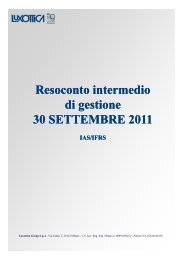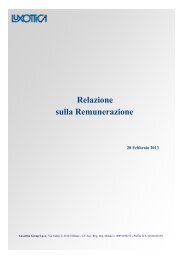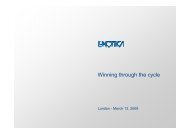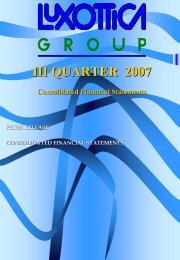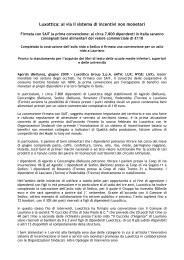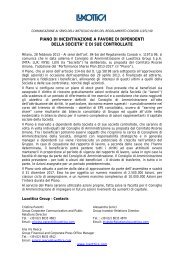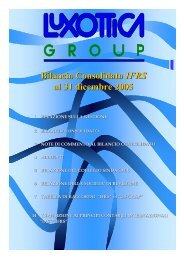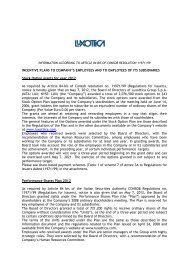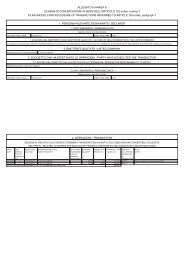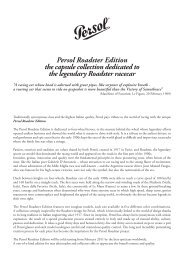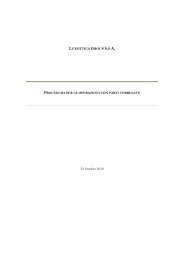Annual Review 2012 - Luxottica
Annual Review 2012 - Luxottica
Annual Review 2012 - Luxottica
You also want an ePaper? Increase the reach of your titles
YUMPU automatically turns print PDFs into web optimized ePapers that Google loves.
106 |<br />
ANNUAL REPORT <strong>2012</strong><br />
Accounts receivable and other receivables<br />
Accounts receivable and other receivables are carried at amortized cost. Losses on<br />
receivables are measured as the difference between the receivables’ carrying amount and<br />
the present value of estimated future cash flows discounted at the receivables’ original<br />
effective interest rate computed at the time of initial recognition. The carrying amount of<br />
the receivables is reduced through an allowance for doubtful accounts. The amount of the<br />
losses on written-off accounts is recorded in the consolidated statement of income within<br />
selling expenses.<br />
Subsequent collections of previously written-off receivables are recorded in the<br />
consolidated statement of income as a reduction of selling expenses.<br />
Inventories<br />
Inventories are stated at the lower of the cost determined by using the average annual<br />
cost method by product line, which approximates the weighted average cost, and the net<br />
realizable value. Provisions for write-downs for raw materials and finished goods which are<br />
considered obsolete or slow moving are computed taking into account their expected<br />
future utilization and their realizable value. The realizable value represents the estimated<br />
sales price, net of estimated sales and distribution costs.<br />
Property, plant and equipment<br />
Property, plant and equipment are measured at historical cost. Historical cost includes<br />
expenditures that are directly attributable to the acquisition of the items. After<br />
initial recognition, property, plant and equipment is carried at cost less accumulated<br />
depreciation and any accumulated impairment loss. The depreciable amount of the<br />
items of property, plant and equipment, measured as the difference between their cost<br />
and their residual value, is allocated on a straight-line basis over their estimated useful<br />
lives as follows:<br />
Estimated useful life<br />
Buildings and building improvements<br />
Machinery and equipment<br />
Aircraft<br />
Other equipment<br />
Leasehold improvements<br />
From 19 to 40 years<br />
From 3 to 12 years<br />
25 years<br />
From 5 to 8 years<br />
The lower of 15 years or the residual duration of the lease contract<br />
Depreciation ends on the date on which the asset is classified as held for sale, in compliance<br />
with IFRS 5 - Non-Current Assets Held for Sale and Discontinued Operations.<br />
Subsequent costs are included in the asset’s carrying amount or recognized as a separate<br />
asset, as appropriate, only when it is probable that future economic benefits associated<br />
with the item will flow to the Group and the cost of the item can be measured reliably. The<br />
carrying amount of the replaced part is derecognized. All other repairs and maintenance



